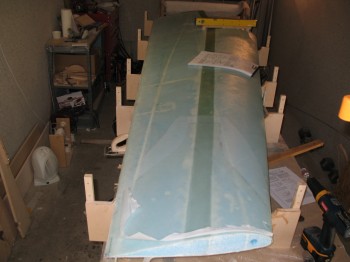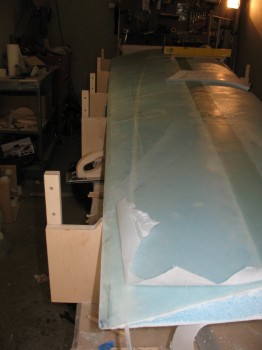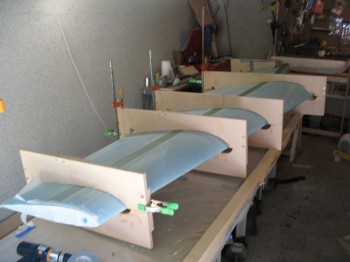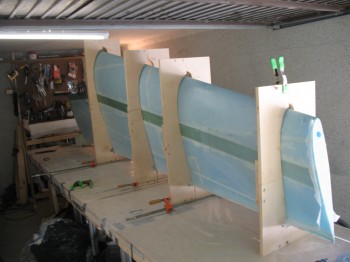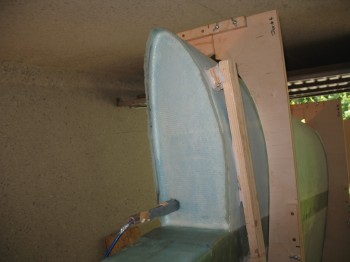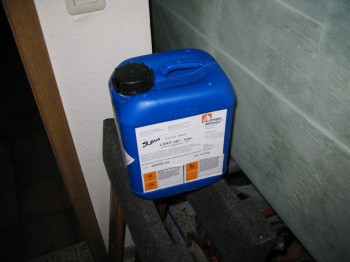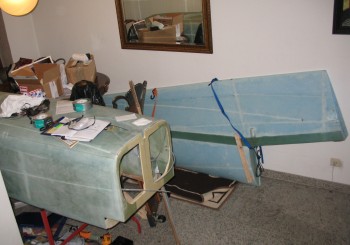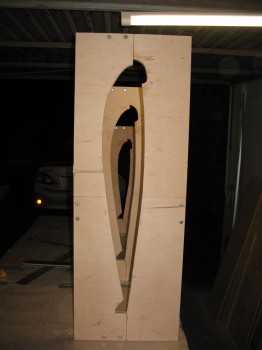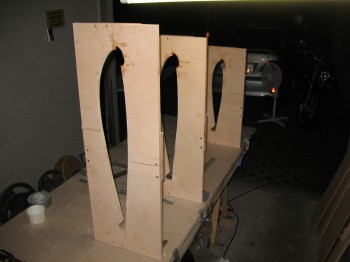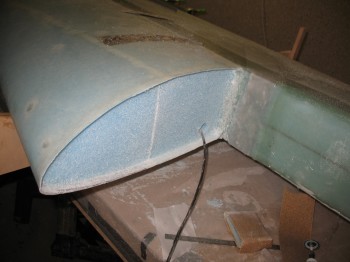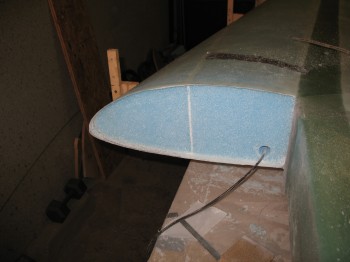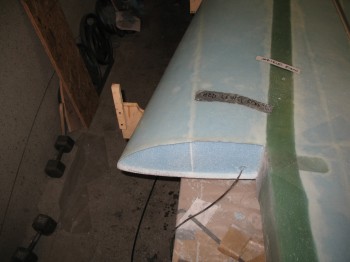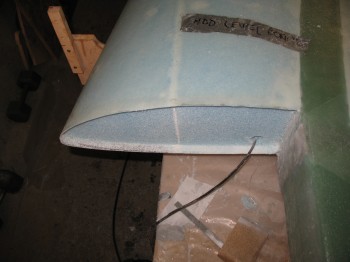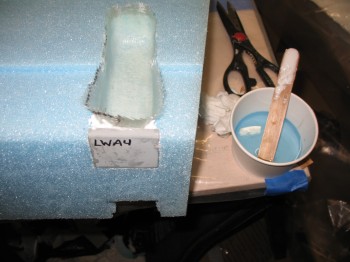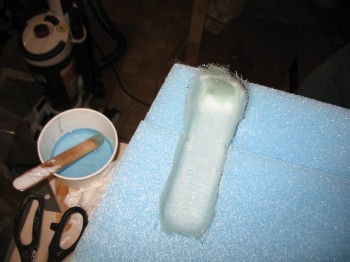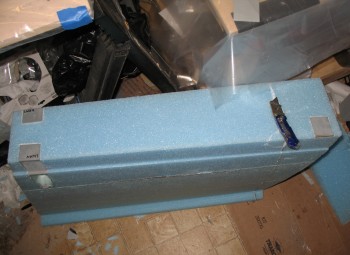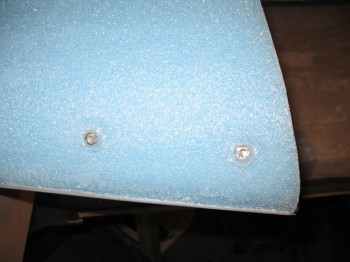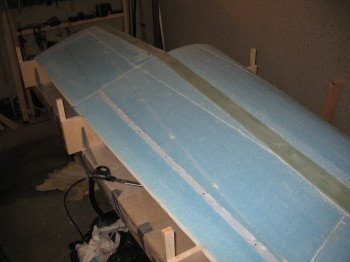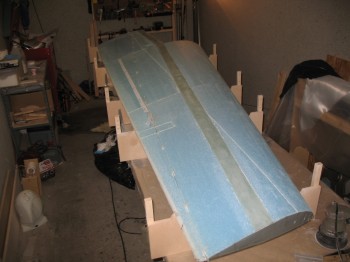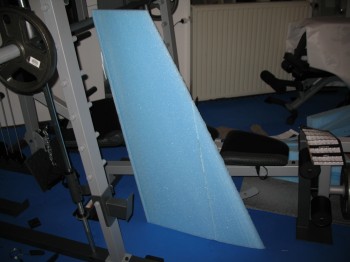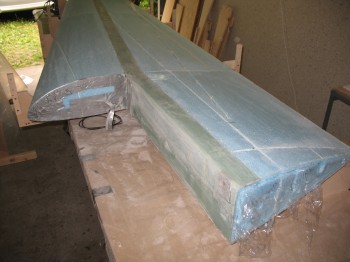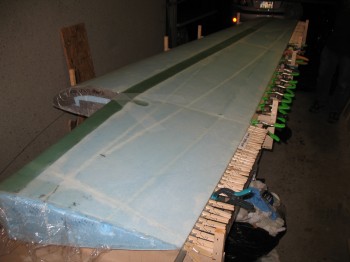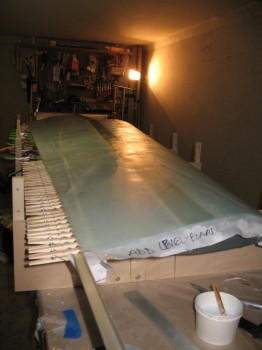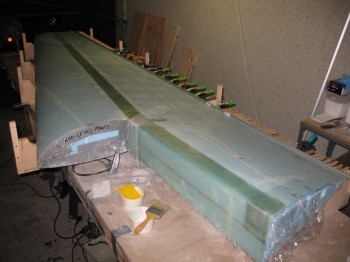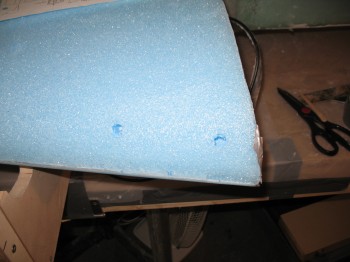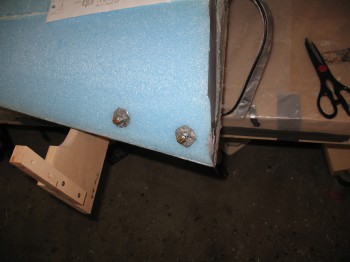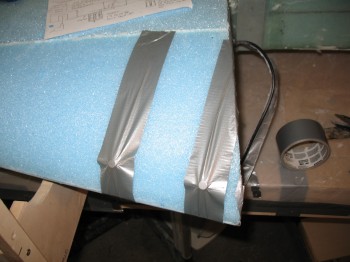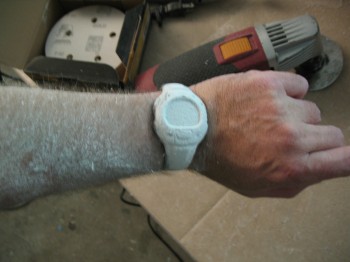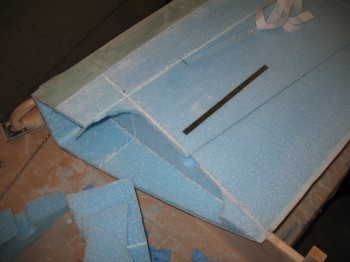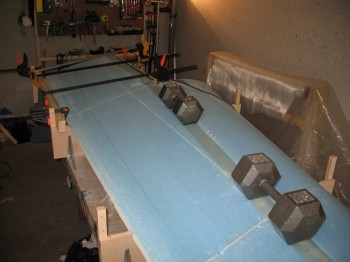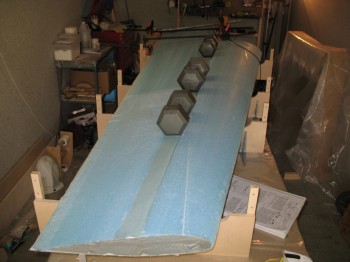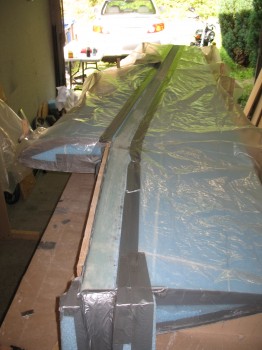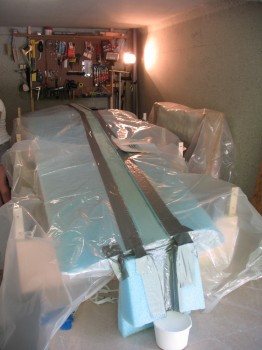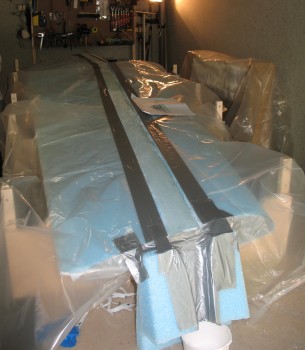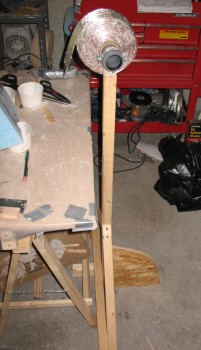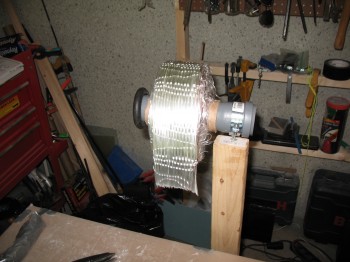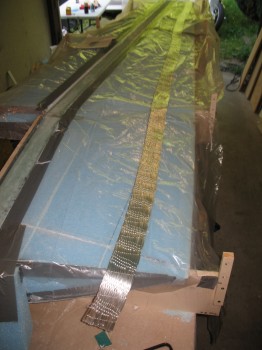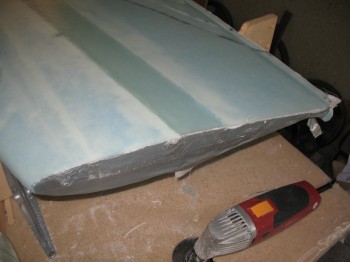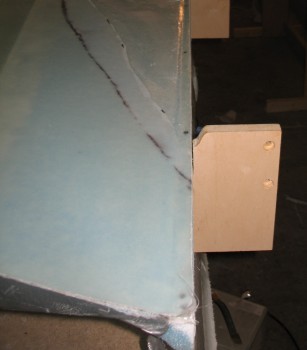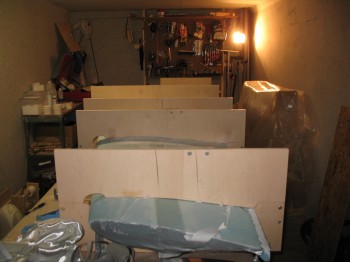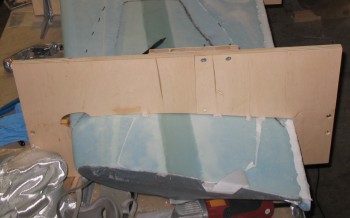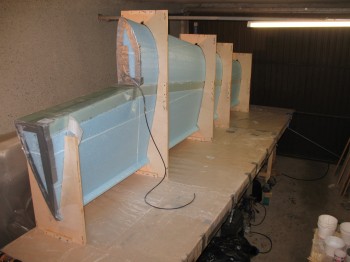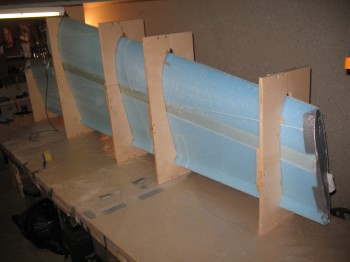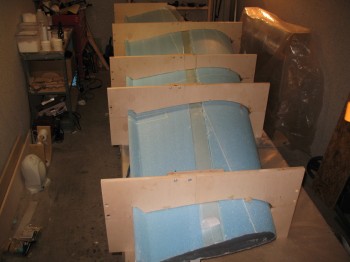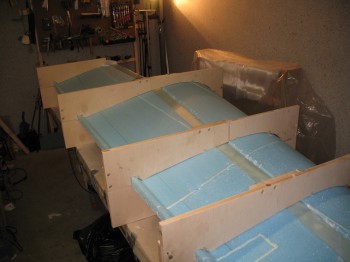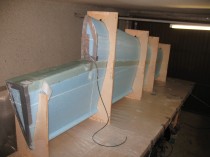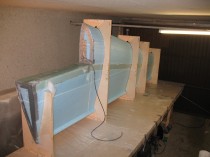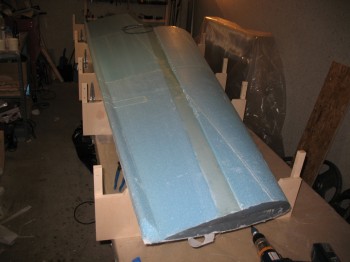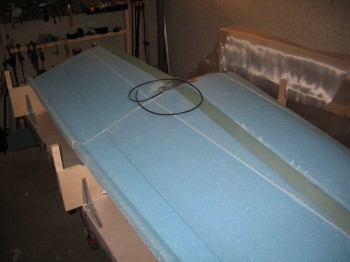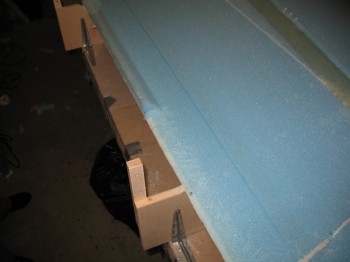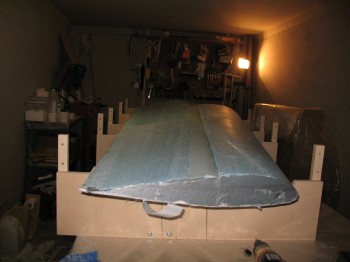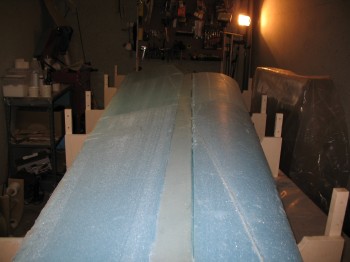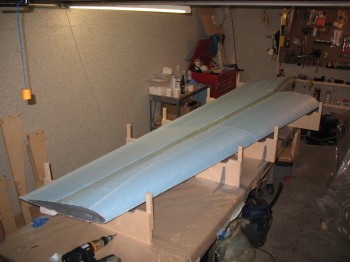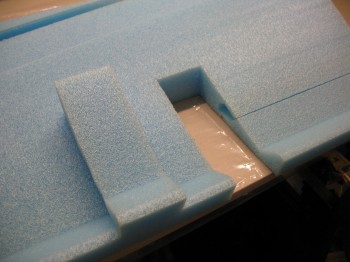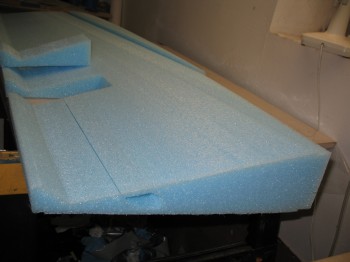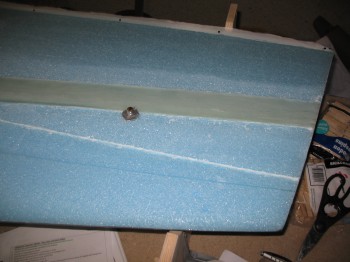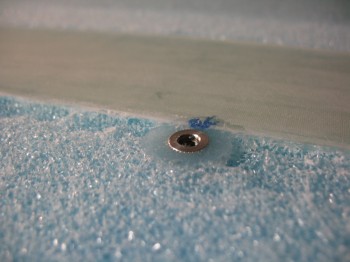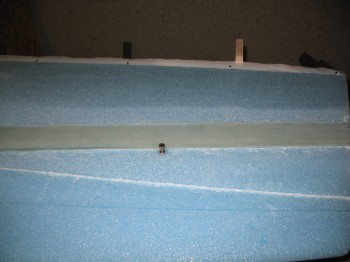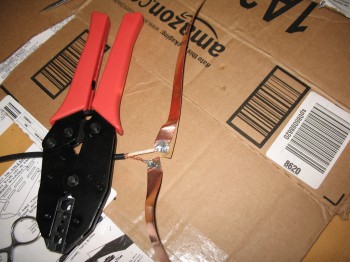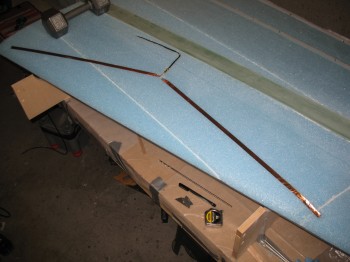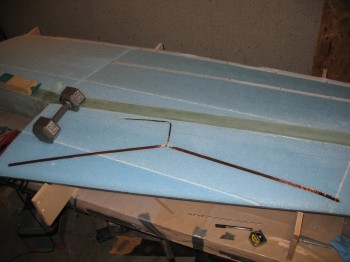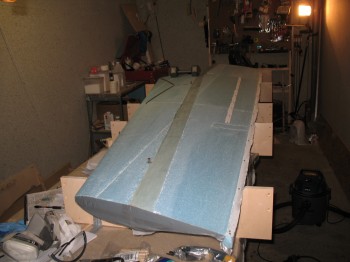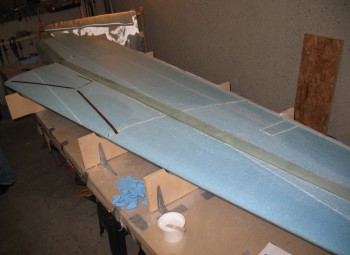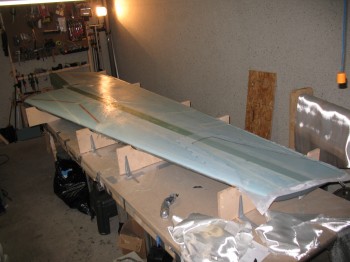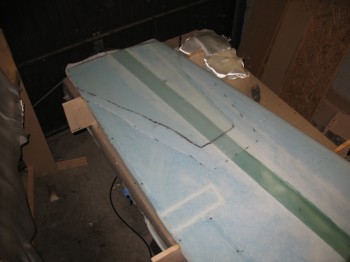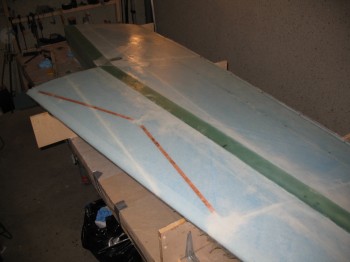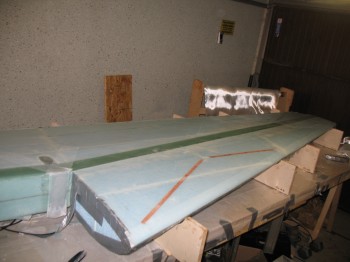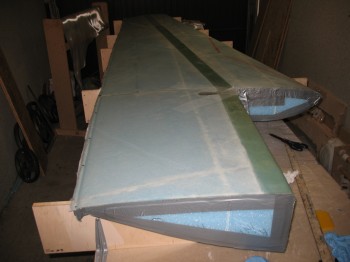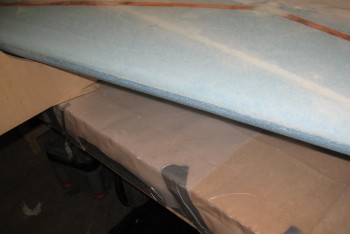Today I very carefully routed & sanded the aft/bottom of FC5 (the Outboard front wing section) to remove the dead epoxy on the surface where it will mate to FC3 (sandwiching the Shear Web), and then made a 0.1″ thick filler piece for FC3.
I micro’d FC2 & FC3, and then set up Jig #5 & micro’d FC1 to FC2. Again, from the Inboard to the Outboard on the aft of the wing are 3 sections: FC1-FC2-FC3.
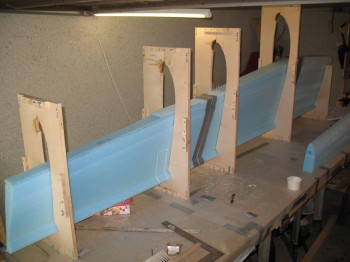
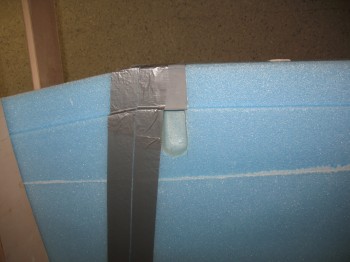
I prepped the wing assembly for the Shear Web. First off, I micro’d in the inverted L-shaped piece at the junction of FC1’s Inboard 6″ wedge for the inset rib, and the solid portion of FC1.
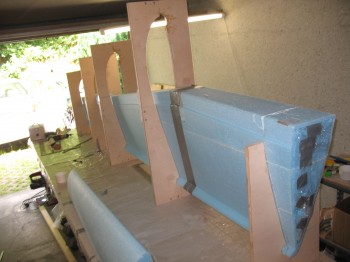
I micro’d on the 0.1 spacer that covered the entire top of FC3. It was just a tad thick so I could sand it down to nearly the exact thickness required for the entire FC2/FC3 shear web foam to be straight and even.
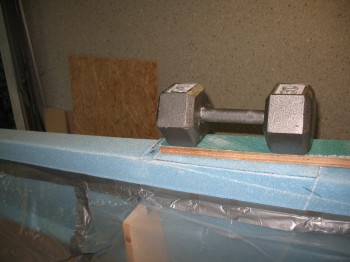
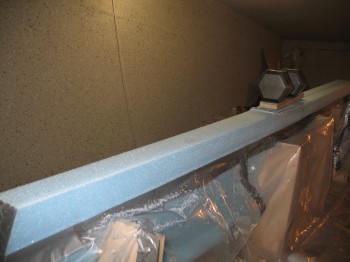
I then pre-pregged Shear Web UNI (that Gina had precut) like I had on the Right wing & micro’d the spar cap shear web area. I then laid up the shear web.
After the shear web was laid up & set, we micro’d the FC4/5 front wing section to the top of the wing assembly/shear web.
Then the real emergency kicked in!
If you look in the picture just above, you’ll see a weight holding down a micro’d piece of foam. By weighing down the foam, and then sanding the top of the wing assembly (top as it is in the picture) there was apparently too much pressure on the seam of the FC2 and FC3 wing sections. I had checked the micro at that seam & it appeared cured, but I assumed wrong. Moreover, this entire scenario that follows was exacerbated by A) my trying to get the Shear Web layup in & get the build back on track, and B) the plastic skirt taped around the wing assembly just happened to be doubled up right in the FC2-FC3 seam area, so it made for a rather opaque view of the underlying wing foam structure.
It wasn’t until the after the Shear Web UNI layup was glassed, squeegeed and Dritz scissor-trimmed and the FC4/5 front wing section was attached that we pulled the plastic protective skirt off. It was then that I saw what could have been a major & costly setback to this build: The FC2 & FC3 sections had split–apparently from the weight applied during the top surface repair–at the Trailing Edge of the wing by about a 1/4″.
My first reaction was quasi-panic mode … a million options rushed through my head. The first issue was that the micro in between FC2 & FC3 was completely cured, or at least nearly so. The next issue was the effect of just leaving the wing that way, and filling in the gap with micro. I quickly measured the TE edge of the wing. As I suspected, the new gap would make the Left wing significantly longer in span than the Right wing. Plus, although probably slight, the geometry & airflow would be different. In addition, I would have to rework the end of the wing & mess with its angle to install the Winglet, greatly increasing the difficulty of yet another part of the build. I decided the wing had to be put back to the right configuration (this all happened in the span of about 5 min).
I told Gina (who was there to help thank God!) to whip up some semi-dry micro. I then ran around the garage & house to find anything that was long enough and strong enough to go all the way through the meat of the wing to hold it up, one on the FC2 side & one on the FC3 side. I used a long socket extension and a piece of round metal tubing as my wing supports. With those in hand, I grabbed 4 long clamps & reversed the heads to make them spreaders, or in this case jacks. I installed a 1/2″ auger bit in my drill, took a deep breath and drilled a hole all the way through FC2, and then did the same on FC3. I tested my improvised metal supports and they fit great.
Once I had all the parts assembled, I faced the toughest challenge: I had to remove the almost completely cured micro out of the seam between FC2 & FC3. I grabbed my wood saw and slowly worked from the bottom (TE) up. Another downside to this scenario was the location… the TEs (bottom) of FC2 & FC3 were very fragile because the whole TE of FC2 & the FC3 TE section near the seam make up the aileron. Thus, the first 4-6″ of FC2 & FC3 on each side of the seam was literally attached on only one side of the wing by not much foam (I’m not sure, but I would say definitely under 1/2″). With this being the case, as I slowly cut out the micro, 2 small pieces of the thin aileron foam chipped off. After 10 minutes or so, I had the micro out for about 2/3 the way up the wing assembly. The remaining top 1/3 of the FC2-FC3 seam was fairly tight and converging, so I didn’t feel that the micro required removing.
With the bad micro out, it was time to install my improvised wing section lifts. I stuck the socket extension through the wing and used the reverse clamp to put very slight tension on the wing FC2 foam. I then did the same on the other end of the socket extension on the opposite side of the wing, still on the FC2 foam. I then did the same thing on the FC3 section. With my wing section lifts in place, but still with the gap exposed, and even with new tape applied to edge of the foam up to the seam, I applied the new micro into the gap/seam. Once the micro was in place, I slowly applied pressure to all 4 clamps. The gap began to close and we wiped away the excess micro as it squeezed out of the seam. I kept rotating the pressure between all 4 clamps until the gap was completely closed and the seam was tightly closed once again.
We finished cleaning up the seams and stuck a myriad of finish nails into the foam seam edges to keep everything aligned. I then re-squeegeed the Shear Web layup, which thankfully was minimally impacted by this quasi-disaster. I then rechecked the entire rest of the wing to ensure nothing else was out of whack. After a few hours I pulled the tape, rechecked the alignment & then used some more micro to lightly set in the broken pieces that had been chipped out with the wood saw. The wing was now whole once again… with no gaps!
Sorry, but I have no pics of the actual repair due to the obvious mass panic that ensued and then working frantically against the clock to repair the wing.
One last thought. It’s amazing how microing one small piece out of place can snowball into a huge crisis. Lesson learned: Be mindful to attention to detail & Be careful in performing the build tasks!






